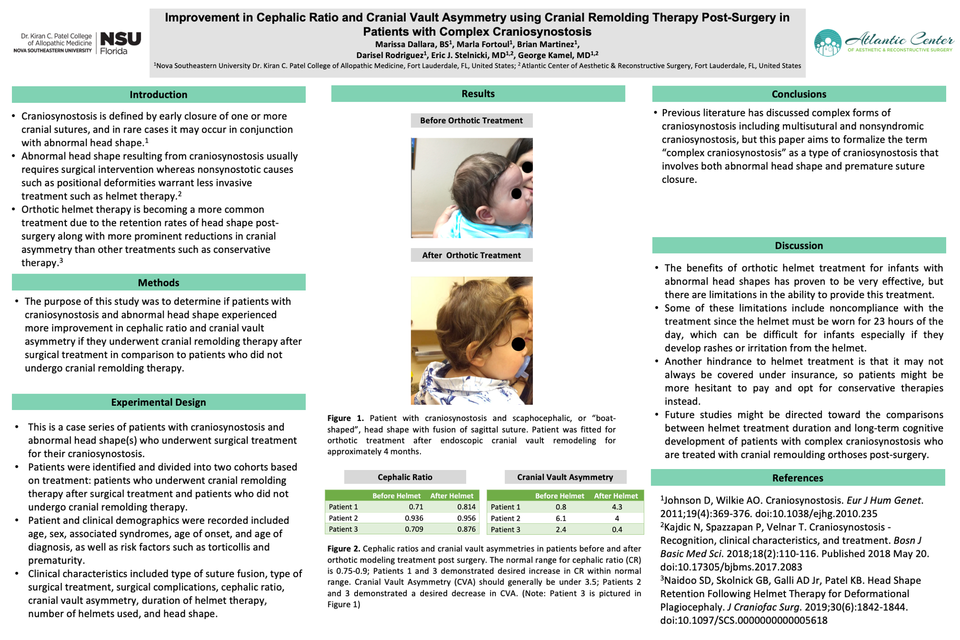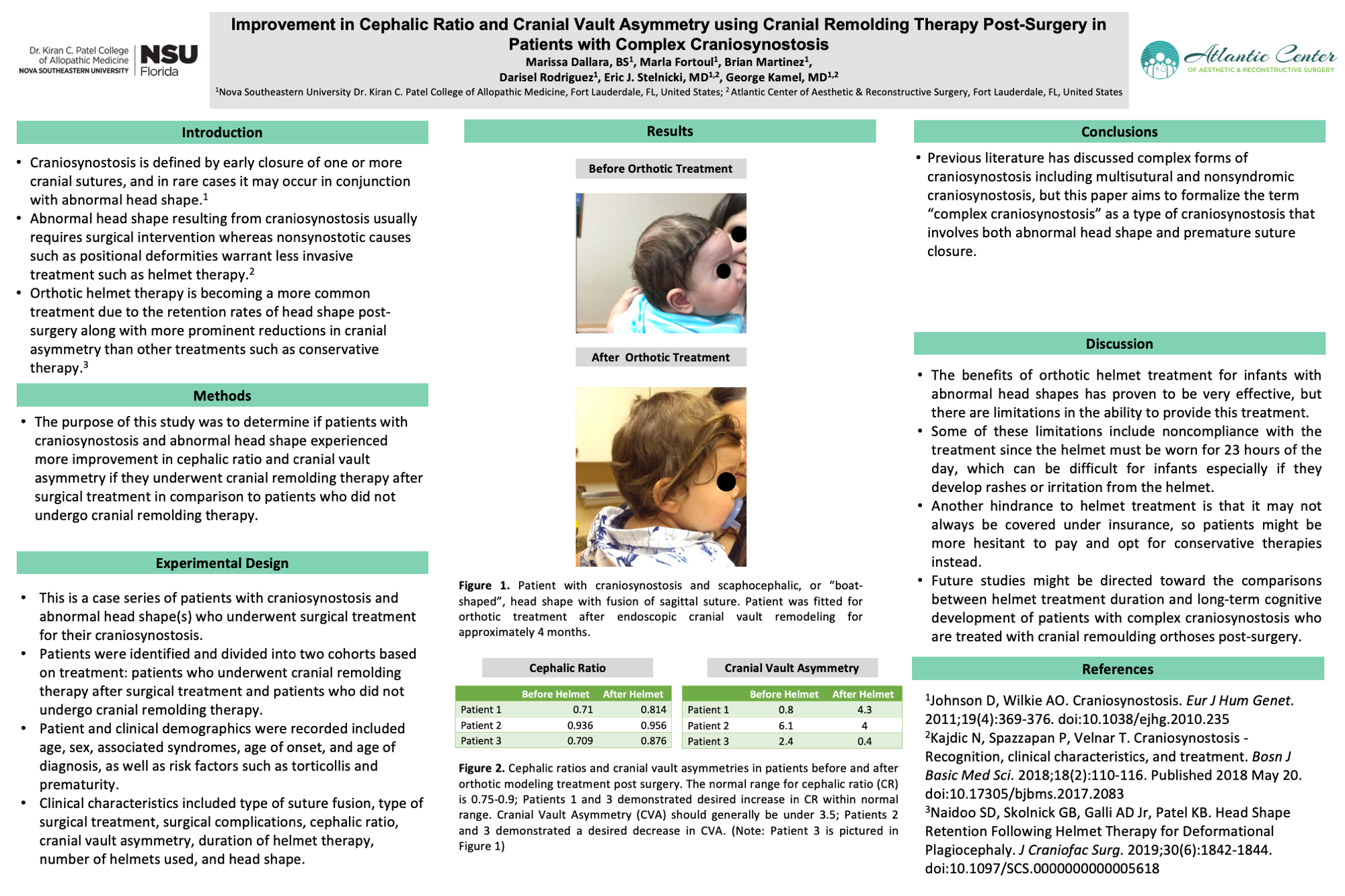Abstract
Introduction
Craniosynostosis is defined by the premature fusion of one or more cranial sutures, and in rare cases it may occur in conjunction with abnormal head shape. Abnormal head shape resulting from craniosynostosis usually requires surgical intervention whereas non-synostotic causes such as positional deformities warrant less invasive treatment such as helmet therapy. The purpose of this study was to determine if patients with craniosynostosis and abnormal head shape experienced more improvement in cephalic ratio and cranial vault asymmetry if they underwent cranial remolding therapy after surgical treatment in comparison to patients who did not undergo cranial remolding therapy.
Methods
This is a case series of patients with craniosynostosis and abnormal head shape(s) who underwent surgical treatment for their craniosynostosis. Patients were identified and divided into two cohorts based on treatment: patients who underwent cranial remolding therapy after surgical treatment and patients who did not undergo cranial remolding therapy. Patient characteristics were recorded included age, sex, associated syndromes, age of onset, and age of diagnosis. Clinical characteristics included type of suture fusion, history of torticollis, type of surgical treatment, surgical complications, cephalic ratio, cranial vault asymmetry, duration of helmet therapy, number of helmets used, and head shape.
Outcomes
Data analysis and records are still currently being sorted and analyzed.
Discussion
Previous literature has discussed complex forms of craniosynostosis including multisutural and nonsyndromic craniosynostosis, but this paper aims to formalize the term “complex craniosynostosis” as a type of craniosynostosis that involves both abnormal head shape and premature suture closure.






